-

Sep
16
Interpretive Summary: BHBA Metoformin Bovine Hepatocytes

Bovine hepatocytes were first treated with different doses of metformin, then exposed to BHBA levels commonly observed in cows experiencing ketosis. Various methods, including western blot, real-time quantitative PCR, chromatin precipitation, and immunofluorescence, were used to assess the activation of various pro- and anti-inflammatory pathways in hepatocytes.
Read more
-

Sep
16
Interpretive Summary: Digestibility Reduced Lignin Alfalfa Horses
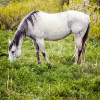
Alfalfa is a commonly used forage for horses with high nutritional requirements, but some of its utility as a highly digestible feed source may be negatively affected by lignin content. Lignin is a complex phenolic polymer that increases plant rigidity and growth, but negatively interacts gastrointestinal microbial populations, limiting the total tract digestibility of the forage.
Read more
-

Sep
15
Interpretive Summary: Esfandyari and Jensen Bayesian genetic selection beef cattle
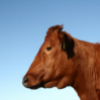
Esfandyari and Jensen conducted a Bayesian analysis of growth performance records of Danish beef herds to calculate residual feed intake and demonstrated its statistical utility in genetic selection of beef bulls over a period of 392 days.
Read more
-

Sep
15
Interpretive Summary: Hidalgo Accuracy Genomic Prediction Broilers
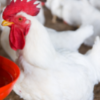
In poultry, the accuracy genomic prediction has historically remained relatively stable when animal with known genotypes and phenotypes were added to the breeding population, but was dramatically reduced when no new animals were included, and as a result the response to selection was smaller than expected.
Read more
-

Sep
13
Interpretive Summary: Effects of guanidinoacetic acid supplementation on nitrogen retention and methionine flux in cattle
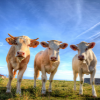
Creatine stores high-energy phosphate bonds in muscle and is synthesized in the liver through methylation of guanidinoacetic acid; supplementation of guanidinoacetic acid may therefore increase methyl group requirements, which may affect methyl group utilization.
Read more
-

Sep
13
Interpretive Summary: Using an automated head chamber system to administer an external marker to estimate fecal output by grazing beef cattle
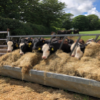
GreenFeed, is an acceptable method to measure fecal output. The research team hypothesized that there would be adequate agreement in fecal output estimated using titanium dioxide as an external marker dosed between the GreenFeed and hand feeding in stanchions.
Read more
-

Sep
13
Interpretive Summary: Melatonin alters bovine uterine artery hemodynamics, vaginal temperatures, and fetal morphometrics during late gestational nutrient restriction in a season-dependent manner
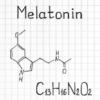
Research recently published in the Journal of Animal Science aimed to use beef heifers to evaluate the effect of maternal nutrient restriction and melatonin supplementation during late gestation on uteroplacental blood flow, vaginal temperatures, and fetal morphometrics during compromised pregnancy. It was hypothesized that maternal nutrient restriction during late gestation would decrease uteroplacental blood flow and melatonin supplementation during the daytime, which would mitigate the adverse effects of compromised pregnancy.
Read more
-

Sep
13
Interpretive Summary: Evaluation of sow thermal preference across three stages of reproduction

A paper recently published in the Journal of Animal Science evaluated whether different reproductive stages of sows altered thermal preference and if current recommendations required updating. It was hypothesized that the reproductive stage would alter thermal preference in sows. This study is the first to look at temperature preference differences based on the reproductive stage of sows.
Read more
-

Sep
13
Interpretive Summary: Detecting effective starting point of genomic selection by divergent trends from BLUP and ssGBLUP in pigs, beef cattle, and broilers

A paper recently published in the Journal of Animal Science aimed to find the start date of genomic selection for a set of economically important traits in pigs, Angus cattle, and broiler chickens by comparing trends obtained using best linear unbiased prediction and single-step genomic best linear unbiased prediction.
Read more
-

Sep
09
Interpretive Summary: Effects of guanidinoacetic acid supplementation on nitrogen retention and methionine flux in cattle
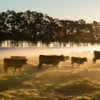
The research team from Kansas State University hypothesized that guanidinoacetic acid supplementation to Metdeficient cattle would induce a methyl group deficiency and that methionine supplementation would reduce the methyl group deficiency. Additionally, it was thought that guanidinoacetic acid might improve nitrogen retention when methionine was supplemented.
Read more
-

Sep
09
Interpretive Summary: The impact of direct-maternal genetic correlations on international beef cattle evaluations for Limousin weaning weight
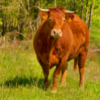
Maternally influenced traits include genetic factors that impact birth and weaning. Cultivating a better understanding of the heritability of maternally influenced traits may improve estimated breeding values (EBV), genetic selection and ultimately productivity.
Read more
-

Sep
09
Interpretive Summary: Piglet birth weight increases, and litter size decreases, with compensatory feeding of sows

High backfat is not a desired trait in finisher pigs. Backfat thickness can vary depending on the season when piglets are born. Sows with high weight loss after summer lactation, for instance, yield smaller pigs with higher backfat thickness at harvest.
Read more
-

Sep
09
Interpretive Summary: Review: optimizing genomic selection for crossbred performance by model improvement and data collection
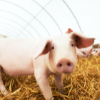
Crossbreeding enables breeders to capitalize on heterosis, which is the phenomenon of superior average performance of crossbreds compared with the average performance of their parental lines. Breeding programs aiming to improve the performance of crossbreds may benefit from genomic prediction of crossbred performance for purebred selection candidates.
Read more
-

Sep
09
Interpretive Summary: Wingless-type mouse mammary tumor virus integration site regulation of bovine theca cells
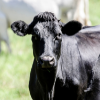
The results of the present study, outlined in the full paper, support the idea that the WNT signaling pathway is involved in the regulation of theca cell proliferation and steroidogenesis, but further research is required to explain the specific mechanisms of action and dose responses of WNT, Dickkopf, and secreted frizzled-related protein 4 and their relationship with other molecules during follicular growth. A better understanding of the role of WNT and their molecular mechanisms will allow for a greater perspective on how these signals impact follicular maturation and subsequent conditions that could lead to ovarian cysts.
Read more
-

Aug
30
Interpretive Summary: Addition of dietary methionine but not dietary taurine or methyl donors/receivers to grain-free diet increases postprandial homocysteine concentrations in adult dogs

Grain-free diets have been popular in the pet industry for over a decade; however, recently, they have been associated with canine dilated cardiomyopathy (DCM). Research has linked DCM with a deficient of taurine in cats, which may be a possible cause for DCM in large breed dogs. Methionine and cysteine, amino acid precursors to taurine synthesis in dogs, is very low in ingredients used to replace grains. To date, there has been no research evaluating the plasma and whole blood taurine concentration of dogs when feeding grain-free diets supplemented with nutrients involved in the biosynthesis of taurine.
Read more
-

Aug
30
Interpretive Summary: The impacts of xylanase on the fermentability and digestibility of high insoluble fiber diets in growing pigs

Adding coproducts to swine feed is an economical choice that can also adversely impact the digestibility of feed. Coproducts contain a higher amount of non-starch polysaccharides (NSP), which cannot be digested by pigs. Poorly digested feed leads to reduced performance, an undesired effect. Adding carbohydrase enzymes to feed may make NPS more digestible without negatively impacting performance.
Read more
-

Aug
30
Interpretive Summary: Effects of induced hindgut acidosis in growing pigs on growth, intestinal morphology and inflammation

Hindgut acidosis was induced by continuously infusing glucose (GLC) or casein (CAS) into the terminal ileum of growing pigs. Pigs were separated into three groups and given either an infusion of water (control), dextrose 50% (GLC) or casein sodium salt (CAS). Average daily feed intake was reduced in GLC and CAS pigs compared to the control.
Read more
-

Aug
30
Interpretive Summary: Thermoregulatory and physiological responses of nonpregnant, mid-gestation, and late-gestation sows exposed to incrementally increasing dry bulb temperature
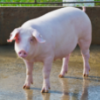
Results of the present study demonstrated that, when compared with mid-gestation and nonpregnant sows, late-gestation sows had increased respiration rate and altered blood characteristics in response to increasing dry bulb temperature, which can be indicative of greater heat stress sensitivity.
Read more
-

Aug
26
FARM Act Reintroduced

The Future of Agricultural Resiliency and Modernization Act (FARM Act), designed to help farmers more effectively fight climate change, has been reintroduced by Representative Josh Harder (D-CA), The FARM Act was first introduced by Harder in 2020 and referred to the Subcommittee on Conservation and Forestry.
Read more
-

Aug
26
New Lawsuit Against USDA Gene-Editing Approvals

In 2020, The United States Department of Agriculture (USDA) issued its final rule to modernize agricultural biotechnology regulations. The rule was revised to enable USDA’s Animal and Plant Health Inspection Service (APHIS) to regulate organisms developed using genetic engineering for plant pest risk with greater precision and reduces regulatory burden for developers of organisms that are unlikely to pose plant pest risks.
Read more
 SepInterpretive Summary: BHBA Metoformin Bovine Hepatocytes
SepInterpretive Summary: BHBA Metoformin Bovine Hepatocytes Bovine hepatocytes were first treated with different doses of metformin, then exposed to BHBA levels commonly observed in cows experiencing ketosis. Various methods, including western blot, real-time quantitative PCR, chromatin precipitation, and immunofluorescence, were used to assess the activation of various pro- and anti-inflammatory pathways in hepatocytes.
Bovine hepatocytes were first treated with different doses of metformin, then exposed to BHBA levels commonly observed in cows experiencing ketosis. Various methods, including western blot, real-time quantitative PCR, chromatin precipitation, and immunofluorescence, were used to assess the activation of various pro- and anti-inflammatory pathways in hepatocytes. SepInterpretive Summary: Digestibility Reduced Lignin Alfalfa Horses
SepInterpretive Summary: Digestibility Reduced Lignin Alfalfa Horses Alfalfa is a commonly used forage for horses with high nutritional requirements, but some of its utility as a highly digestible feed source may be negatively affected by lignin content. Lignin is a complex phenolic polymer that increases plant rigidity and growth, but negatively interacts gastrointestinal microbial populations, limiting the total tract digestibility of the forage.
Alfalfa is a commonly used forage for horses with high nutritional requirements, but some of its utility as a highly digestible feed source may be negatively affected by lignin content. Lignin is a complex phenolic polymer that increases plant rigidity and growth, but negatively interacts gastrointestinal microbial populations, limiting the total tract digestibility of the forage. SepInterpretive Summary: Esfandyari and Jensen Bayesian genetic selection beef cattle
SepInterpretive Summary: Esfandyari and Jensen Bayesian genetic selection beef cattle Esfandyari and Jensen conducted a Bayesian analysis of growth performance records of Danish beef herds to calculate residual feed intake and demonstrated its statistical utility in genetic selection of beef bulls over a period of 392 days.
Esfandyari and Jensen conducted a Bayesian analysis of growth performance records of Danish beef herds to calculate residual feed intake and demonstrated its statistical utility in genetic selection of beef bulls over a period of 392 days. SepInterpretive Summary: Hidalgo Accuracy Genomic Prediction Broilers
SepInterpretive Summary: Hidalgo Accuracy Genomic Prediction Broilers In poultry, the accuracy genomic prediction has historically remained relatively stable when animal with known genotypes and phenotypes were added to the breeding population, but was dramatically reduced when no new animals were included, and as a result the response to selection was smaller than expected.
In poultry, the accuracy genomic prediction has historically remained relatively stable when animal with known genotypes and phenotypes were added to the breeding population, but was dramatically reduced when no new animals were included, and as a result the response to selection was smaller than expected. SepInterpretive Summary: Effects of guanidinoacetic acid supplementation on nitrogen retention and methionine flux in cattle
SepInterpretive Summary: Effects of guanidinoacetic acid supplementation on nitrogen retention and methionine flux in cattle Creatine stores high-energy phosphate bonds in muscle and is synthesized in the liver through methylation of guanidinoacetic acid; supplementation of guanidinoacetic acid may therefore increase methyl group requirements, which may affect methyl group utilization.
Creatine stores high-energy phosphate bonds in muscle and is synthesized in the liver through methylation of guanidinoacetic acid; supplementation of guanidinoacetic acid may therefore increase methyl group requirements, which may affect methyl group utilization. SepInterpretive Summary: Using an automated head chamber system to administer an external marker to estimate fecal output by grazing beef cattle
SepInterpretive Summary: Using an automated head chamber system to administer an external marker to estimate fecal output by grazing beef cattle GreenFeed, is an acceptable method to measure fecal output. The research team hypothesized that there would be adequate agreement in fecal output estimated using titanium dioxide as an external marker dosed between the GreenFeed and hand feeding in stanchions.
GreenFeed, is an acceptable method to measure fecal output. The research team hypothesized that there would be adequate agreement in fecal output estimated using titanium dioxide as an external marker dosed between the GreenFeed and hand feeding in stanchions. SepInterpretive Summary: Melatonin alters bovine uterine artery hemodynamics, vaginal temperatures, and fetal morphometrics during late gestational nutrient restriction in a season-dependent manner
SepInterpretive Summary: Melatonin alters bovine uterine artery hemodynamics, vaginal temperatures, and fetal morphometrics during late gestational nutrient restriction in a season-dependent manner Research recently published in the Journal of Animal Science aimed to use beef heifers to evaluate the effect of maternal nutrient restriction and melatonin supplementation during late gestation on uteroplacental blood flow, vaginal temperatures, and fetal morphometrics during compromised pregnancy. It was hypothesized that maternal nutrient restriction during late gestation would decrease uteroplacental blood flow and melatonin supplementation during the daytime, which would mitigate the adverse effects of compromised pregnancy.
Research recently published in the Journal of Animal Science aimed to use beef heifers to evaluate the effect of maternal nutrient restriction and melatonin supplementation during late gestation on uteroplacental blood flow, vaginal temperatures, and fetal morphometrics during compromised pregnancy. It was hypothesized that maternal nutrient restriction during late gestation would decrease uteroplacental blood flow and melatonin supplementation during the daytime, which would mitigate the adverse effects of compromised pregnancy. SepInterpretive Summary: Evaluation of sow thermal preference across three stages of reproduction
SepInterpretive Summary: Evaluation of sow thermal preference across three stages of reproduction A paper recently published in the Journal of Animal Science evaluated whether different reproductive stages of sows altered thermal preference and if current recommendations required updating. It was hypothesized that the reproductive stage would alter thermal preference in sows. This study is the first to look at temperature preference differences based on the reproductive stage of sows.
A paper recently published in the Journal of Animal Science evaluated whether different reproductive stages of sows altered thermal preference and if current recommendations required updating. It was hypothesized that the reproductive stage would alter thermal preference in sows. This study is the first to look at temperature preference differences based on the reproductive stage of sows. SepInterpretive Summary: Detecting effective starting point of genomic selection by divergent trends from BLUP and ssGBLUP in pigs, beef cattle, and broilers
SepInterpretive Summary: Detecting effective starting point of genomic selection by divergent trends from BLUP and ssGBLUP in pigs, beef cattle, and broilers A paper recently published in the Journal of Animal Science aimed to find the start date of genomic selection for a set of economically important traits in pigs, Angus cattle, and broiler chickens by comparing trends obtained using best linear unbiased prediction and single-step genomic best linear unbiased prediction.
A paper recently published in the Journal of Animal Science aimed to find the start date of genomic selection for a set of economically important traits in pigs, Angus cattle, and broiler chickens by comparing trends obtained using best linear unbiased prediction and single-step genomic best linear unbiased prediction. SepInterpretive Summary: Effects of guanidinoacetic acid supplementation on nitrogen retention and methionine flux in cattle
SepInterpretive Summary: Effects of guanidinoacetic acid supplementation on nitrogen retention and methionine flux in cattle The research team from Kansas State University hypothesized that guanidinoacetic acid supplementation to Metdeficient cattle would induce a methyl group deficiency and that methionine supplementation would reduce the methyl group deficiency. Additionally, it was thought that guanidinoacetic acid might improve nitrogen retention when methionine was supplemented.
The research team from Kansas State University hypothesized that guanidinoacetic acid supplementation to Metdeficient cattle would induce a methyl group deficiency and that methionine supplementation would reduce the methyl group deficiency. Additionally, it was thought that guanidinoacetic acid might improve nitrogen retention when methionine was supplemented. SepInterpretive Summary: The impact of direct-maternal genetic correlations on international beef cattle evaluations for Limousin weaning weight
SepInterpretive Summary: The impact of direct-maternal genetic correlations on international beef cattle evaluations for Limousin weaning weight Maternally influenced traits include genetic factors that impact birth and weaning. Cultivating a better understanding of the heritability of maternally influenced traits may improve estimated breeding values (EBV), genetic selection and ultimately productivity.
Maternally influenced traits include genetic factors that impact birth and weaning. Cultivating a better understanding of the heritability of maternally influenced traits may improve estimated breeding values (EBV), genetic selection and ultimately productivity. SepInterpretive Summary: Piglet birth weight increases, and litter size decreases, with compensatory feeding of sows
SepInterpretive Summary: Piglet birth weight increases, and litter size decreases, with compensatory feeding of sows High backfat is not a desired trait in finisher pigs. Backfat thickness can vary depending on the season when piglets are born. Sows with high weight loss after summer lactation, for instance, yield smaller pigs with higher backfat thickness at harvest.
High backfat is not a desired trait in finisher pigs. Backfat thickness can vary depending on the season when piglets are born. Sows with high weight loss after summer lactation, for instance, yield smaller pigs with higher backfat thickness at harvest. SepInterpretive Summary: Review: optimizing genomic selection for crossbred performance by model improvement and data collection
SepInterpretive Summary: Review: optimizing genomic selection for crossbred performance by model improvement and data collection Crossbreeding enables breeders to capitalize on heterosis, which is the phenomenon of superior average performance of crossbreds compared with the average performance of their parental lines. Breeding programs aiming to improve the performance of crossbreds may benefit from genomic prediction of crossbred performance for purebred selection candidates.
Crossbreeding enables breeders to capitalize on heterosis, which is the phenomenon of superior average performance of crossbreds compared with the average performance of their parental lines. Breeding programs aiming to improve the performance of crossbreds may benefit from genomic prediction of crossbred performance for purebred selection candidates. SepInterpretive Summary: Wingless-type mouse mammary tumor virus integration site regulation of bovine theca cells
SepInterpretive Summary: Wingless-type mouse mammary tumor virus integration site regulation of bovine theca cells The results of the present study, outlined in the full paper, support the idea that the WNT signaling pathway is involved in the regulation of theca cell proliferation and steroidogenesis, but further research is required to explain the specific mechanisms of action and dose responses of WNT, Dickkopf, and secreted frizzled-related protein 4 and their relationship with other molecules during follicular growth. A better understanding of the role of WNT and their molecular mechanisms will allow for a greater perspective on how these signals impact follicular maturation and subsequent conditions that could lead to ovarian cysts.
The results of the present study, outlined in the full paper, support the idea that the WNT signaling pathway is involved in the regulation of theca cell proliferation and steroidogenesis, but further research is required to explain the specific mechanisms of action and dose responses of WNT, Dickkopf, and secreted frizzled-related protein 4 and their relationship with other molecules during follicular growth. A better understanding of the role of WNT and their molecular mechanisms will allow for a greater perspective on how these signals impact follicular maturation and subsequent conditions that could lead to ovarian cysts. AugInterpretive Summary: Addition of dietary methionine but not dietary taurine or methyl donors/receivers to grain-free diet increases postprandial homocysteine concentrations in adult dogs
AugInterpretive Summary: Addition of dietary methionine but not dietary taurine or methyl donors/receivers to grain-free diet increases postprandial homocysteine concentrations in adult dogs Grain-free diets have been popular in the pet industry for over a decade; however, recently, they have been associated with canine dilated cardiomyopathy (DCM). Research has linked DCM with a deficient of taurine in cats, which may be a possible cause for DCM in large breed dogs. Methionine and cysteine, amino acid precursors to taurine synthesis in dogs, is very low in ingredients used to replace grains. To date, there has been no research evaluating the plasma and whole blood taurine concentration of dogs when feeding grain-free diets supplemented with nutrients involved in the biosynthesis of taurine.
Grain-free diets have been popular in the pet industry for over a decade; however, recently, they have been associated with canine dilated cardiomyopathy (DCM). Research has linked DCM with a deficient of taurine in cats, which may be a possible cause for DCM in large breed dogs. Methionine and cysteine, amino acid precursors to taurine synthesis in dogs, is very low in ingredients used to replace grains. To date, there has been no research evaluating the plasma and whole blood taurine concentration of dogs when feeding grain-free diets supplemented with nutrients involved in the biosynthesis of taurine. AugInterpretive Summary: The impacts of xylanase on the fermentability and digestibility of high insoluble fiber diets in growing pigs
AugInterpretive Summary: The impacts of xylanase on the fermentability and digestibility of high insoluble fiber diets in growing pigs Adding coproducts to swine feed is an economical choice that can also adversely impact the digestibility of feed. Coproducts contain a higher amount of non-starch polysaccharides (NSP), which cannot be digested by pigs. Poorly digested feed leads to reduced performance, an undesired effect. Adding carbohydrase enzymes to feed may make NPS more digestible without negatively impacting performance.
Adding coproducts to swine feed is an economical choice that can also adversely impact the digestibility of feed. Coproducts contain a higher amount of non-starch polysaccharides (NSP), which cannot be digested by pigs. Poorly digested feed leads to reduced performance, an undesired effect. Adding carbohydrase enzymes to feed may make NPS more digestible without negatively impacting performance. AugInterpretive Summary: Effects of induced hindgut acidosis in growing pigs on growth, intestinal morphology and inflammation
AugInterpretive Summary: Effects of induced hindgut acidosis in growing pigs on growth, intestinal morphology and inflammation Hindgut acidosis was induced by continuously infusing glucose (GLC) or casein (CAS) into the terminal ileum of growing pigs. Pigs were separated into three groups and given either an infusion of water (control), dextrose 50% (GLC) or casein sodium salt (CAS). Average daily feed intake was reduced in GLC and CAS pigs compared to the control.
Hindgut acidosis was induced by continuously infusing glucose (GLC) or casein (CAS) into the terminal ileum of growing pigs. Pigs were separated into three groups and given either an infusion of water (control), dextrose 50% (GLC) or casein sodium salt (CAS). Average daily feed intake was reduced in GLC and CAS pigs compared to the control. AugInterpretive Summary: Thermoregulatory and physiological responses of nonpregnant, mid-gestation, and late-gestation sows exposed to incrementally increasing dry bulb temperature
AugInterpretive Summary: Thermoregulatory and physiological responses of nonpregnant, mid-gestation, and late-gestation sows exposed to incrementally increasing dry bulb temperature Results of the present study demonstrated that, when compared with mid-gestation and nonpregnant sows, late-gestation sows had increased respiration rate and altered blood characteristics in response to increasing dry bulb temperature, which can be indicative of greater heat stress sensitivity.
Results of the present study demonstrated that, when compared with mid-gestation and nonpregnant sows, late-gestation sows had increased respiration rate and altered blood characteristics in response to increasing dry bulb temperature, which can be indicative of greater heat stress sensitivity. AugFARM Act Reintroduced
AugFARM Act Reintroduced The Future of Agricultural Resiliency and Modernization Act (FARM Act), designed to help farmers more effectively fight climate change, has been reintroduced by Representative Josh Harder (D-CA), The FARM Act was first introduced by Harder in 2020 and referred to the Subcommittee on Conservation and Forestry.
The Future of Agricultural Resiliency and Modernization Act (FARM Act), designed to help farmers more effectively fight climate change, has been reintroduced by Representative Josh Harder (D-CA), The FARM Act was first introduced by Harder in 2020 and referred to the Subcommittee on Conservation and Forestry. AugNew Lawsuit Against USDA Gene-Editing Approvals
AugNew Lawsuit Against USDA Gene-Editing Approvals In 2020, The United States Department of Agriculture (USDA) issued its final rule to modernize agricultural biotechnology regulations. The rule was revised to enable USDA’s Animal and Plant Health Inspection Service (APHIS) to regulate organisms developed using genetic engineering for plant pest risk with greater precision and reduces regulatory burden for developers of organisms that are unlikely to pose plant pest risks.
In 2020, The United States Department of Agriculture (USDA) issued its final rule to modernize agricultural biotechnology regulations. The rule was revised to enable USDA’s Animal and Plant Health Inspection Service (APHIS) to regulate organisms developed using genetic engineering for plant pest risk with greater precision and reduces regulatory burden for developers of organisms that are unlikely to pose plant pest risks.



